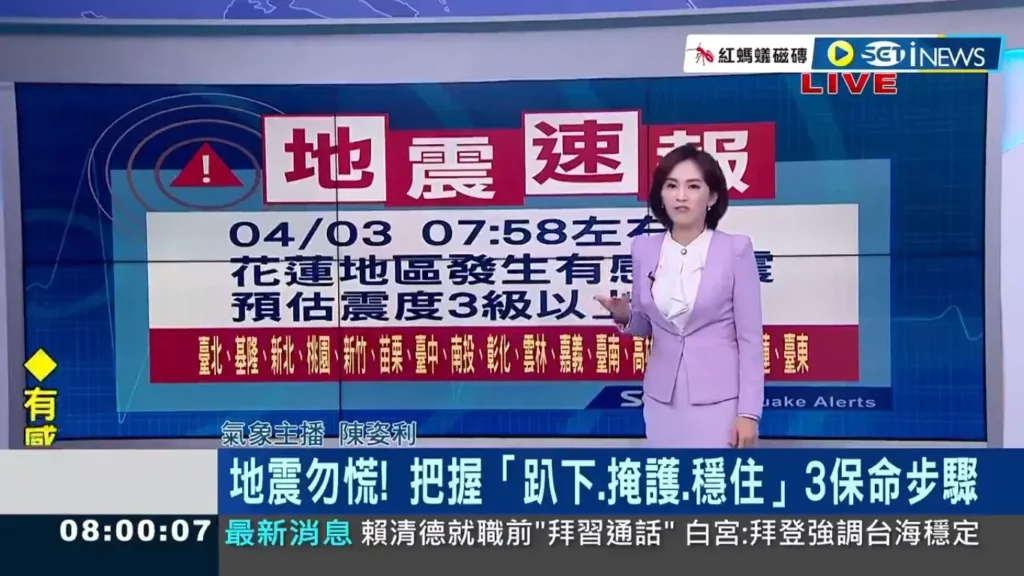Authorities in Taiwan, Japan, and the Philippines issued tsunami alerts for their coastal regions, anticipating waves of up to three meters.

A magnitude 7.5 earthquake struck Wednesday morning near Taiwan, triggering tsunami alerts in that territory and the southern islands of Japan, authorities said.
The Japan Meteorological Agency calculated the earthquake’s magnitude at 7.5, although the United States Geological Survey (USGS) reported it as 7.4.
Authorities in Taiwan, Japan, and the Philippines issued tsunami alerts for their coastal regions, anticipating waves of up to three meters.
Taipei Mayor Chiang Wanan declared a level two emergency to respond to potential disasters in the city.
“The city’s disaster response center has been raised to level two, public works, industrial stations, and fire departments have deployed personnel, and emergency response teams have been established within each unit, and investigations, reporting, and relief efforts have immediately commenced,” he added.
Citizens were also urged to be cautious and vigilant for possible aftershocks, according to a statement posted on his Facebook account.
The epicenter of the earthquake, which occurred at 7:58 a.m. Wednesday (23:58 GMT Tuesday), was located in the sea, 25 kilometers southeast of Hualien County’s coast, with a depth of 15.5 kilometers.
The alert in Japan was for its remote islands near Taiwan, including Miyakojima Island, according to the meteorological agency.
The metro systems in the cities of Taipei, Taichung, and Kaohsiung suspended their operations for nearly an hour due to the earthquake, according to Taiwan’s official CNA news agency.
“Evacuate!” a ticker on Japan’s national television NHK read. “A tsunami is coming, please evacuate immediately,” said a presenter on the Japanese network. “Don’t stop, don’t go back.”
According to the USGS, the earthquake had its epicenter 18 km south of the Taiwanese city of Hualien, with a depth of 34.8 km.
On New Year’s Day, Japan was rocked by the deadliest earthquake in the past eight years when a magnitude 7.6 earthquake struck Ishikawa Prefecture on the western coast. More than 230 people died after the seismic event destroyed or partially destroyed 44,000 homes.
Earthquakes are frequent in Japan (experiencing around 1,500 tremors per year), one of the most seismically active areas in the world. Japan experiences about one-fifth of the world’s earthquakes with a magnitude of 6 or higher.
The severity of tsunamis—vast potentially destructive wave series that can travel hundreds of kilometers per hour—also depends on multiple factors.
Even earthquakes of the highest magnitude typically cause minimal damage in Japan and Taiwan due to special construction techniques and strict building codes.
Japan has also developed sophisticated procedures and technology to alert and evacuate the population when necessary.
The largest earthquake recorded in Japan was a massive magnitude 9.0 underwater tremor in March 2011 off the northeast coast of Japan, which triggered a tsunami that left around 18,500 dead or missing.
The 2011 disaster also caused the meltdown of three reactors at the Fukushima nuclear power plant, resulting in Japan’s worst post-war disaster and the most severe nuclear accident since Chernobyl.
The total cost was estimated at 16.9 trillion yen ($112 billion), not including the hazardous dismantling of the Fukushima facilities, which is expected to take decades.
Despite stricter construction guidelines, many structures, particularly outside major cities but not limited to them, are old and vulnerable.







